Native Primer for Indigenous Lands
Navajo Tours USA – Nageezi, NM
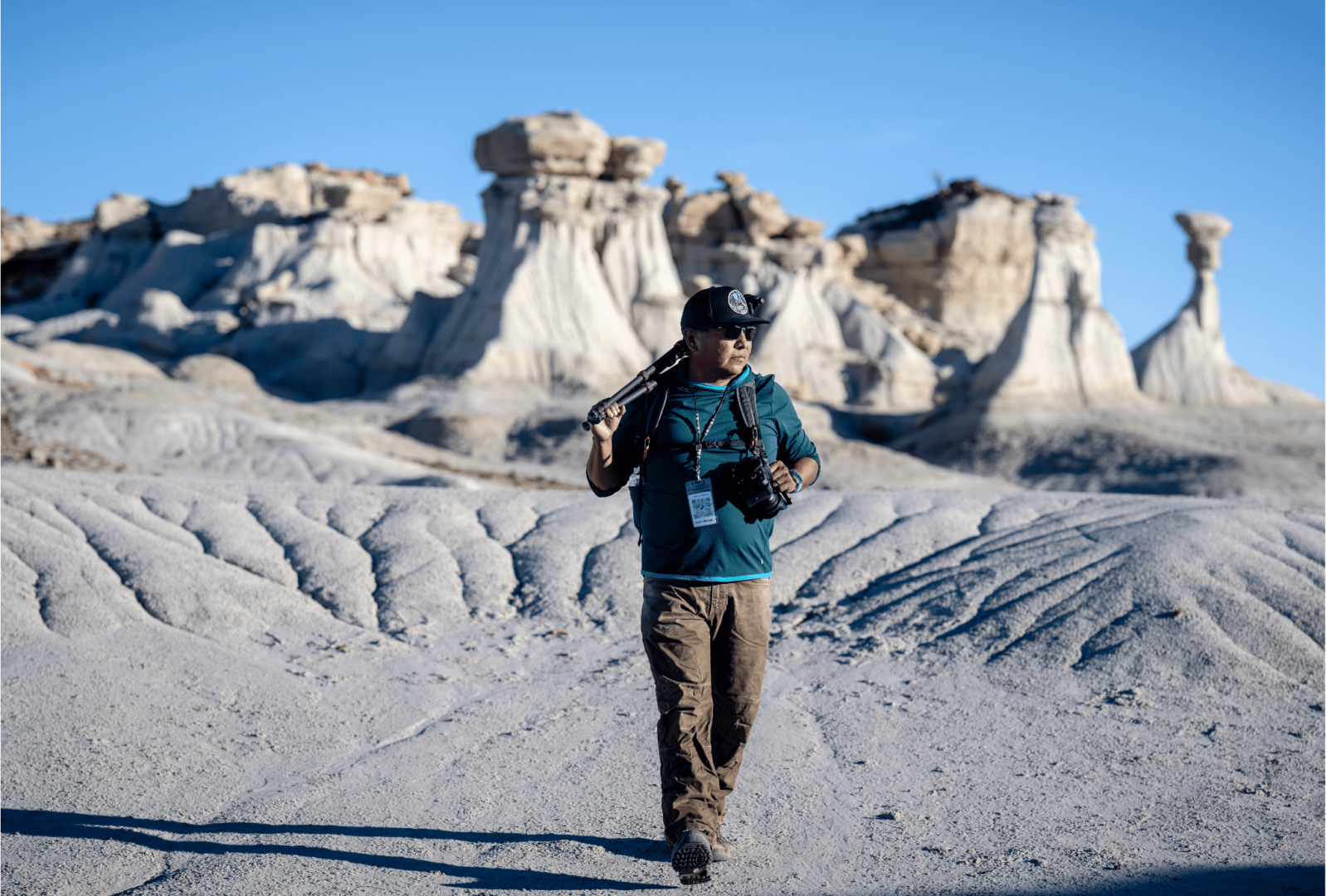
Diné guide Kialo Winters crests a small, sandy rise covered in short scrub brush deep within the Ah-Shi-Sle-Pah Wilderness, smiles and turns to a group of people lugging pounds of camera gear. “Prepare to be amazed,” he says with a grin. “Sensory overload.”
Shortly the stunning Guardians formation looms into view as a jumbled and weather sculpted collection of prehistoric rock art. “That’s Mother Nature’s humor,” says Winters, who operates Navajo Tours USA. “These are the Guardians. The Guardians of the Valley of Dreams, all in the background there.”
A former teacher in Navajo communities in New Mexico’s Four Corners area, as well as a salesman in educational technology tools used to “creatively bridge Navajo language and Navajo culture into an online space,” Winters kind of fell into being a tour guide by accident. “It was during the end of my time in sales that Terri, my wife, came up with the idea for this business,” he says. “It was a big leap, and, like many small businesses, I got the phone call informing me of my layoff. That moment pushed me, and I fully committed to what had been a side hustle – our tour guiding business.”
This was in 2019 and despite the looming pandemic, that side hustle quickly turned into far more. The Winters are steadfast in their belief that outdoor recreation can be not only a full-time avocation and passion for them, but for the state, as well. As a matter of fact, the couple recently doubled down on that commitment with the opening of the Bisti Campground, a four-acre site currently set up for dispersed camping in Nageezi, New Mexico, with plans to expand services in the future.
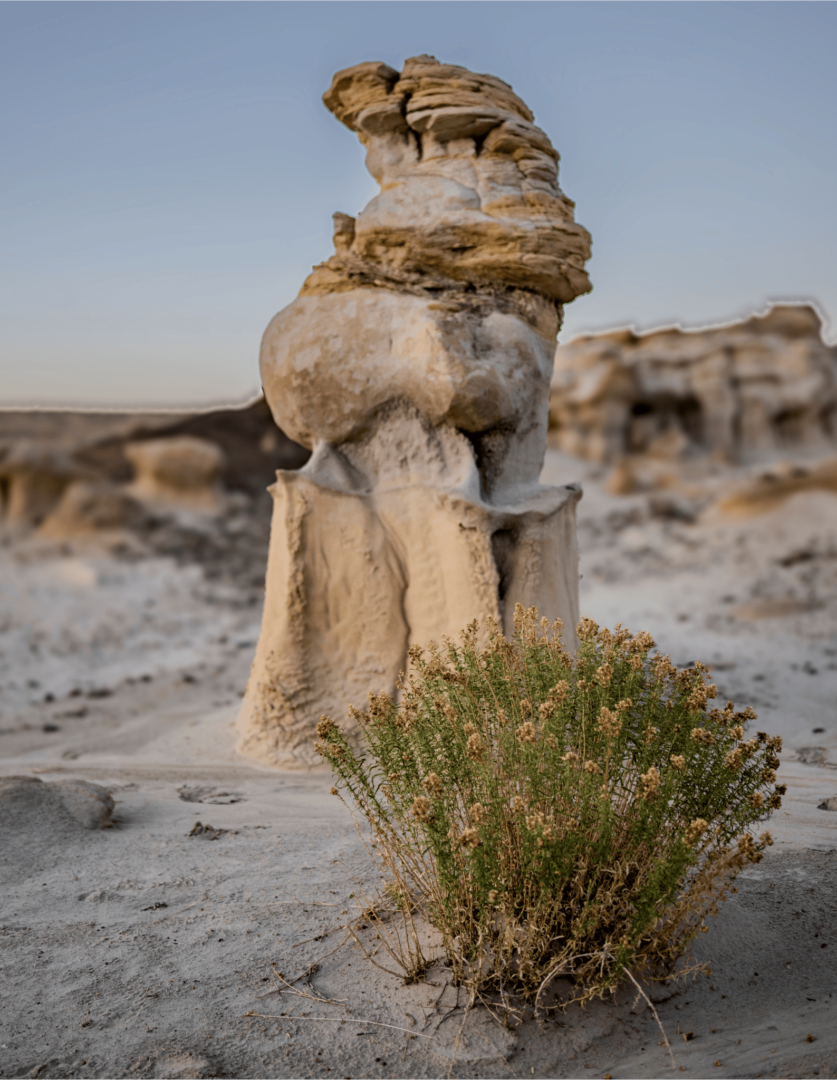
With a tag name of, “Your base camp awaits,” the Bisti Campground is a well-positioned jumping off point for local exploration and adventure as it is within easy reach of Chaco Culture National Historical Park, Ah- Shi-Sle-Pah and the Bisti/De-Na-Zin Wilderness. Since the target market for Winters’ tours trend toward older adventure seekers, it seems like Bisti Campground should evolve into a perfectly complementary operation.
“Since we opened we are slowly progressing with our three-year and five-year plans,” he says. “We offer dispersed camping, but we plan to expand our amenities in the future. Eventually, we will provide full hookups for RVs and small cabins. Our tours primarily attract retirees, making them our number-one demographic. As for our campground, the data on usage trends is still unknown. It will take several years to determine the trends within this area.” Still, at the rate Navajo Tours USA is growing, Bisti Campground could exceed expectations quickly.
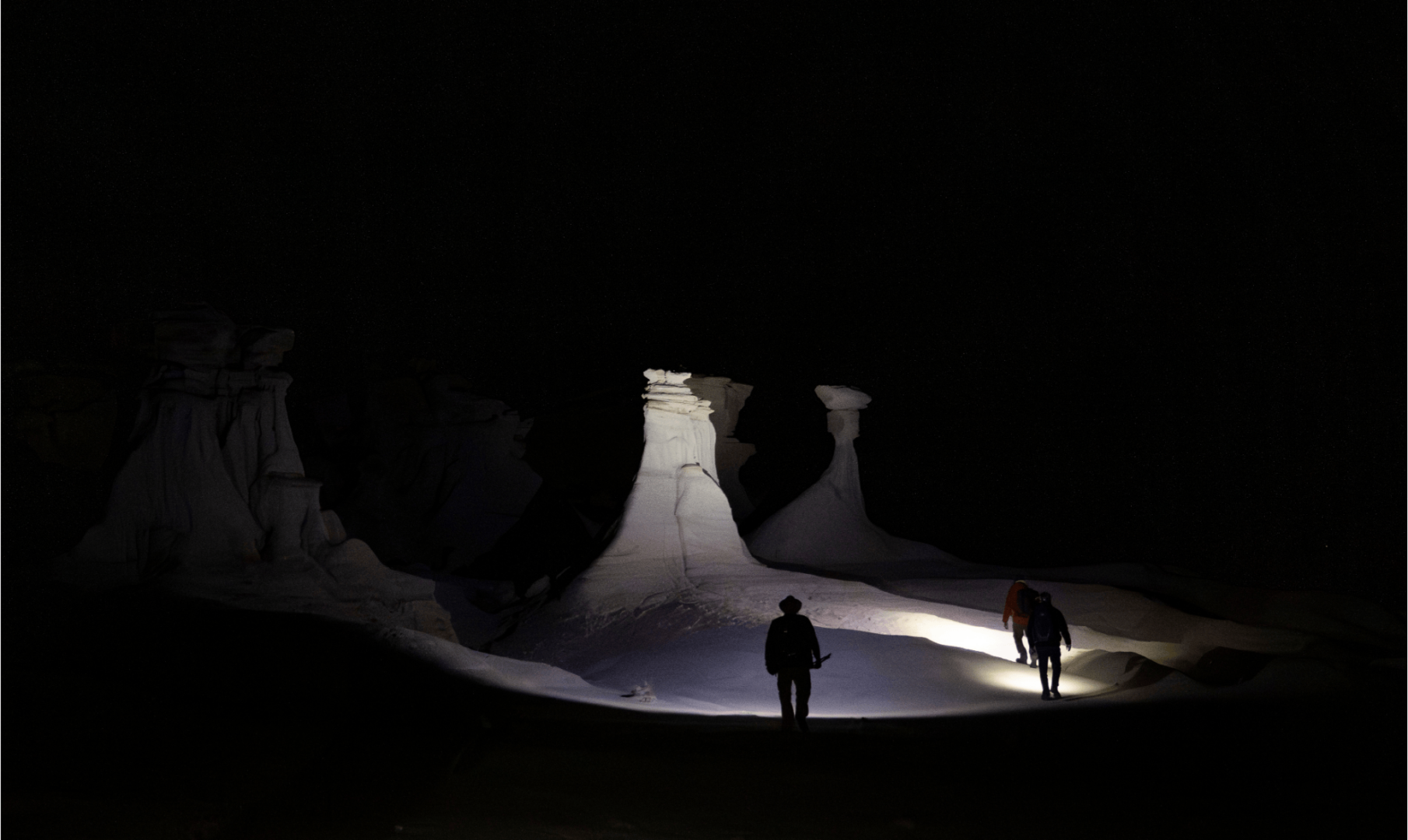
EXPLORING THE MIND AND BODY, AS WELL AS RUGGED LANDSCAPES
As for Navajo Tours USA, Winters, who traces his roots to both Diné and Zia, sees it as a chance to educate and engage tourists in the background of the Pueblo peoples and the amazing land they occupy. “This area is our ancestral homelands and to the area pueblos. The 19 pueblos; the Hopi, the Apache and the Diné people of this area,” he says. “And traditionally, spanning back millennia, this is a very important part of our identity.”
That identity, that history, has been passed down for generations and now Winters is providing just a peek behind the scenes into that traditional background as he moves through the landscapes of his tours. “Our identity is shaped through the conduit of storytelling, which contains indigenous knowledge,” he says, “With our language we’re able to convey our sacred words to our learners. In our tradition, a learner’s age does not define how much indigenous knowledge is taught; instead it is determined by the openness of their heart and their mindset.”
And while Winters is making a living sharing his Diné expertise and his knowledge of tribal lands, he’s doing it with the mindset of helping others achieve some of that inner peace that one can achieve by settling into harmony with the surroundings. “With that, we are all in noise; the noise of consumerism, capitalism, and even academia,” he points out. “And so to navigate through all this, we must have harmony. There is a sacred word for this concept of harmony. Achieving this state is done through ceremony, song, prayer, and meditation.”
Winters moves across a dry wash plain dotted with ancient detritus and covered in blasted volcanic basalt and shiny with pulverized quartz crystals toward a tumble-filled gully populated by impossible landforms scattered and piled at precarious angles. This area is what the Diné used as the basis for the location’s name: Áshįįh Łibáhí. “Loosely translated, its meaning refers to the granules of colored salt, which describes the mineral crystals,” Winters says. “In this wilderness area, the mineral crystals are amber and white, which are the defining features to the place name of this area.”
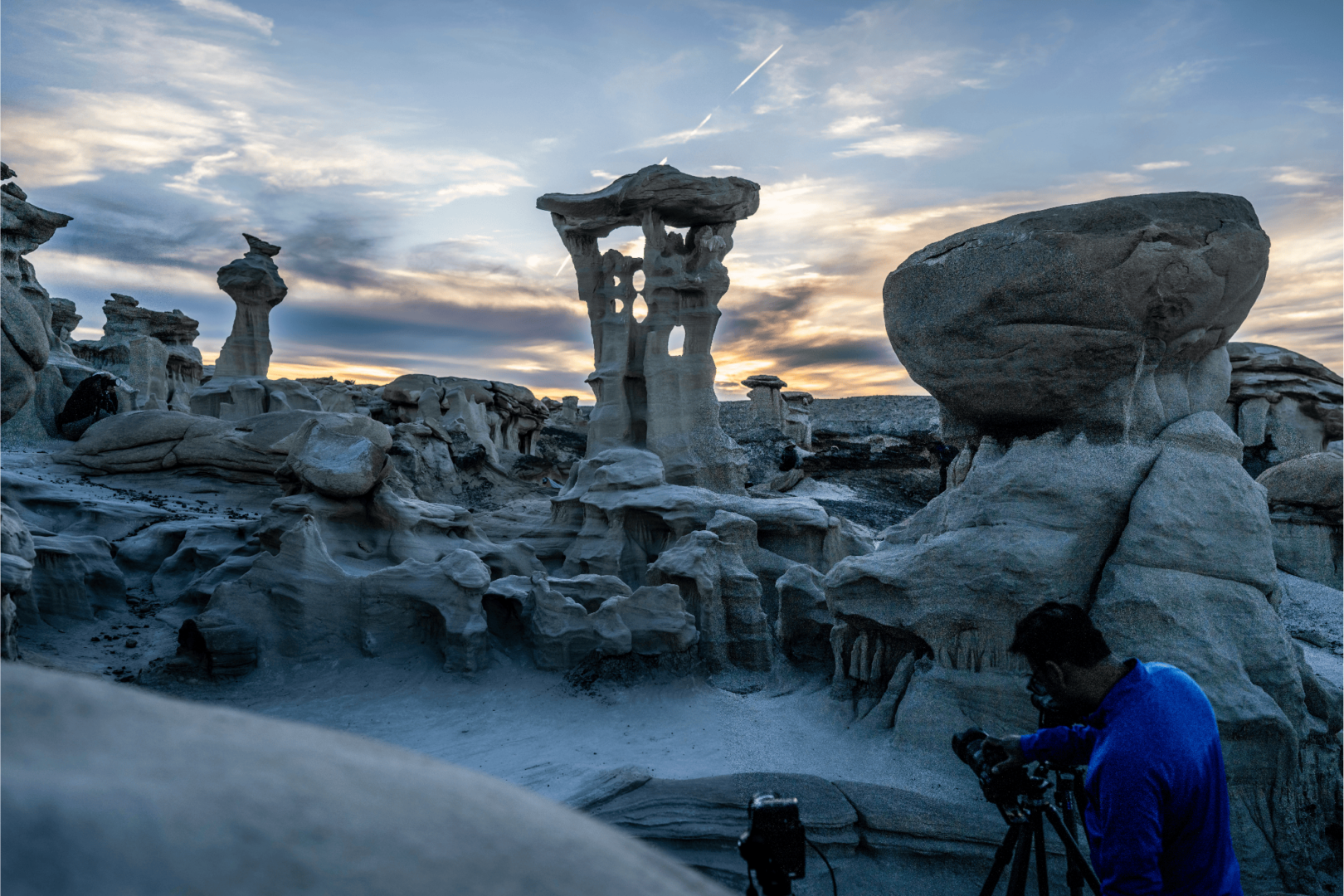
NATIONAL AND INTERNATIONAL RECOGNITION
Although Navajo Tours USA was just a fledgling business it quickly caught the eye of National Geographic magazine and was included in a story naming 2019’s Best Trips, highlighting Bisti/De-Na-Zin and recommending Winters’ five-hour tour “for an in-depth look at the area’s landscape, legends, and Navajo culture.”
And while tourism ground to halt in New Mexico for some time after that during the pandemic lockdowns, Navajo Tours USA quickly regained its footing and appeal, particularly to travelers from outside the U.S. Winters has been enjoying consistent growth year after year and has two additional indigenous guides well-versed in providing the intricate information that makes the tours more than just another simple trip to check off a list, but rather a privilege for a one-of-a-kind experience.
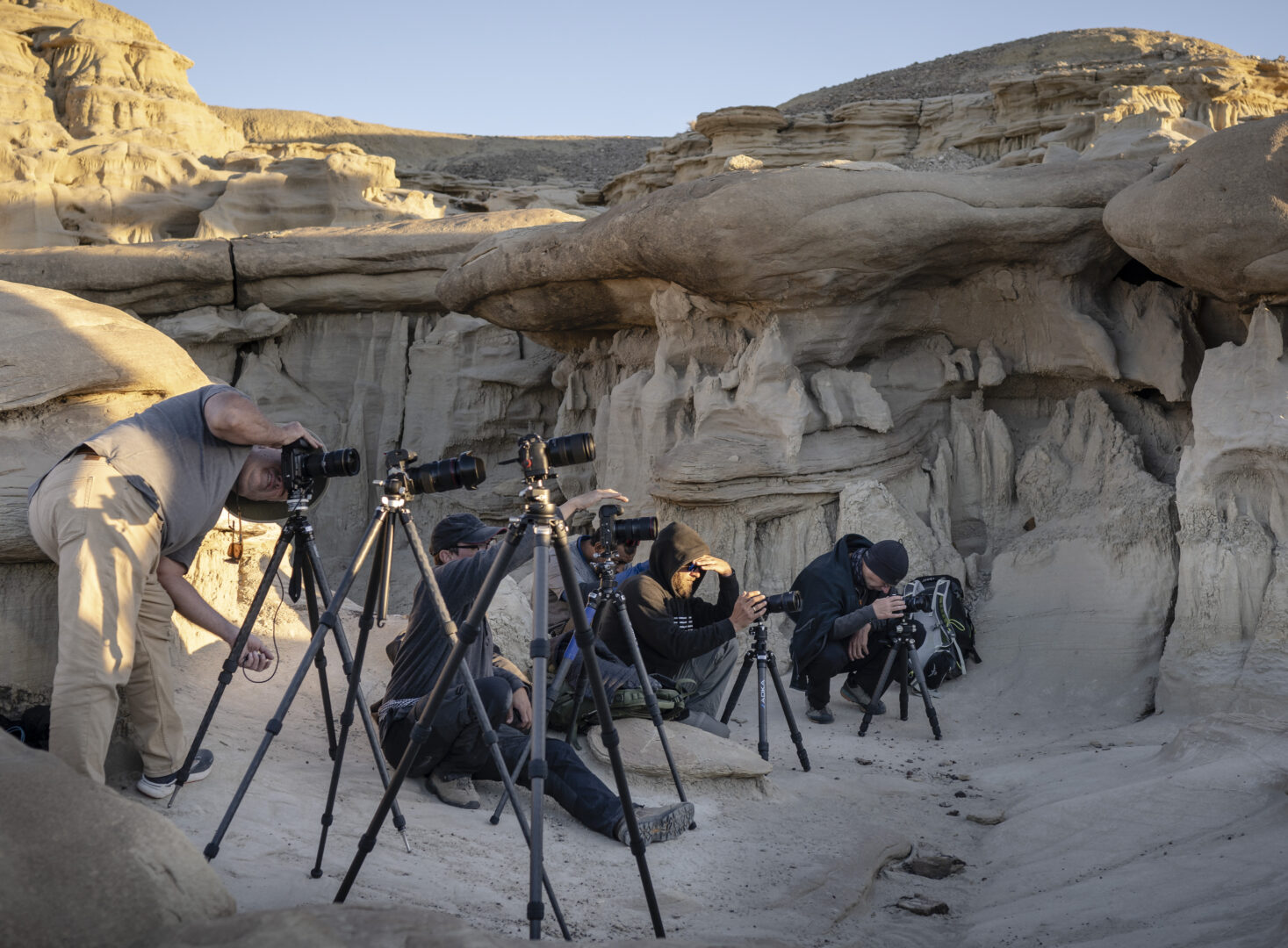
“As a tour guiding business, we provide safe access to our ancestral and traditional homelands. Our process involves creatively engaging with our travel guests who are from around the world, sharing local history and the histories of indigenous peoples on these lands. We address questions about indigenous knowledge from travelers, deepening the discussion when these topics are public knowledge. Sharing indigenous knowledge is a key aspect of our tours, but there’s a threshold we have to be aware of, because some knowledge is sensitive and cannot be shared.”
Exactly what can be shared and what should remain sacred is done in conjunction with indigenous elders who provide guidance, wisdom and counsel. “Our elders and our mentors require us to keep protocol to make sure that we don’t pass that threshold,” Winters says. “I once asked my mentors from my clan – the Badlands people – about this. One day, my mentor said, ‘The reason why we don’t share past this threshold is for everyone’s safety; it’s for man’s safety.’ There is responsibility in carrying knowledge. Today, interest groups have exploited their knowledge, driven by greed. Money and power changes a man.”
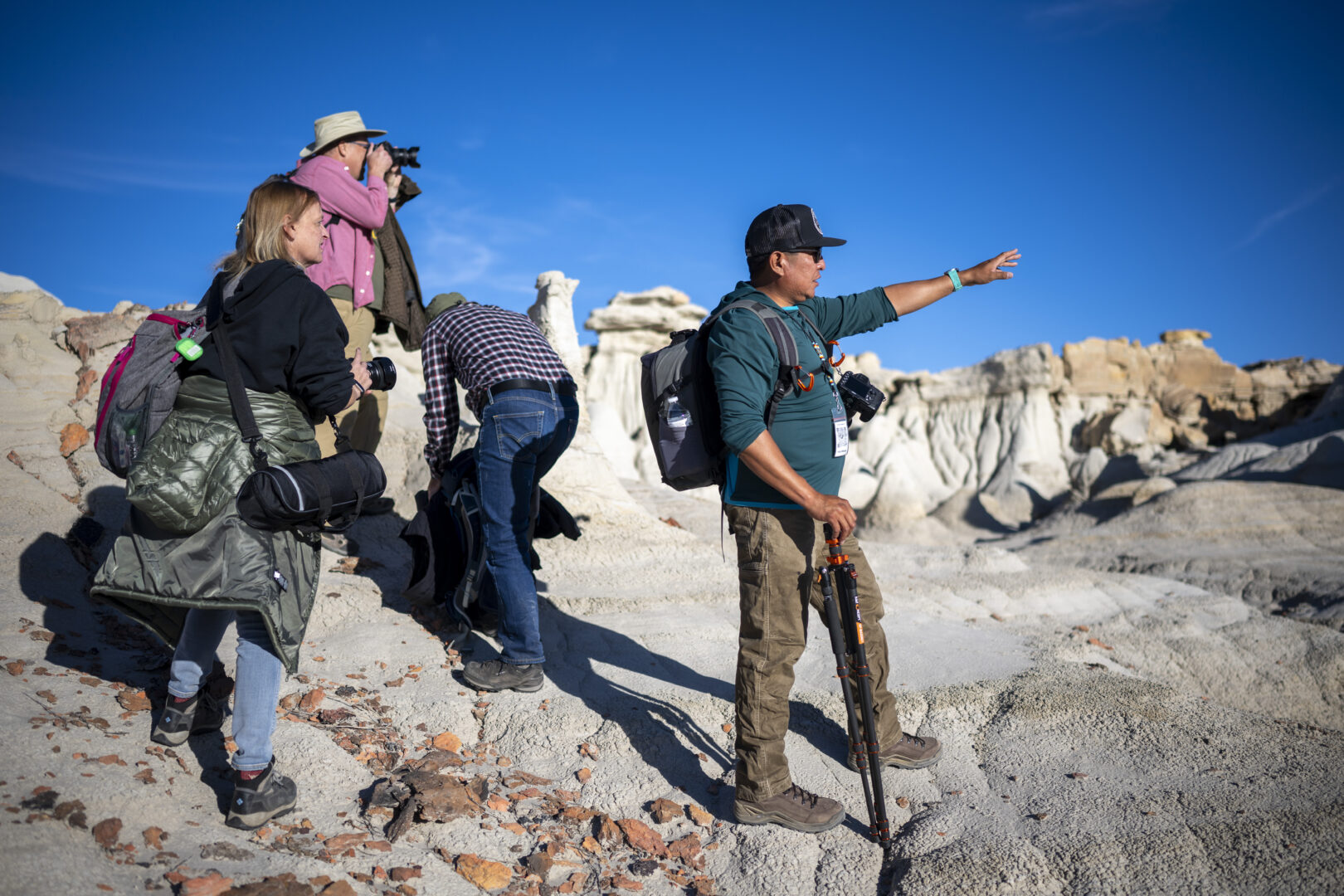
WORLD HISTORY AND GEOGRAPHY 101
Winters moves easily and gracefully up an escarpment, following a path that is difficult to see unless dropping into his footsteps as he passes. The climb is a tour unto itself, ascending through the planet’s history, passing through various levels and colored layers. “Science is in consensus to say there were a lot of cypress and sycamore trees and ancient ponderosa pine trees that have petrified,” Winters says, pointing to a deep crimson petrified log in the earth. “That tells a story of Earth’s history long ago. We’re hiking around 6,100 feet (above sea level), depending on what part of the valley we are in. Long ago, it was about 100 feet above sea level and the climate was different here.”
He pauses again and indicates an indigo vein. “The seams of black that we’re seeing here are organic matter from megaflora,” Winters said. “This area has lots of coal layers; a lot of herbivores, omnivores, and the predators, like today’s coyotes, were the Tyrannosaurus. These large predators required plenty of prey, and for the prey, they needed plenty of food. And, so those thick coal seams proves that.”
Glancing back at the tilted and topsy-turvy landscape filled with wild mushroom formations, and triangular hoodoos topped with little knobs and boulders haphazardly perched atop great slabs of angular rock, Winters grins like a college professor in front of a new group of freshmen. “Over millions of years, there was erosion happening throughout the region, along with volcanic activity,” he says. “We see a lot of iron concretions, a lot of basalt, pitted into these layers of clay and sandstone. There are limestone layers here. Marine fossils give evidence of that, yes, a lot of this was under sea. Seismic activities displaced a lot of water, carving out these crevasses and creating these canyons and valleys. Then, Mother Nature fine tunes the rock formations we like to photograph.”
Indeed, Mother Nature wielded a craftsman’s scalpel in creating the other-worldly landforms.
“Many delicate rock formations – hoodoos, rock spires, mushrooms, fairy chimneys, as they’re known – all refer to the same type of rock composition. The hoodoos have denser caps with skirts made up of dust-like silt sediment,” Winters notes. “These skirts or columns are dictated by the shape and circumference of what’s on top of them. That’s why it’s very important we don’t sit on, stand on, or push over any of these caps.” Not surprisingly, the area is rife not only with fossils, but other intriguing indications of a far-gone era, like dinosaur bones. “These rock layers date back to the upper Cretaceous period,” Winters says. “We are literally walking back in time, over 60 million years. These are layers where dinosaur fossils and petrified wood are found.”
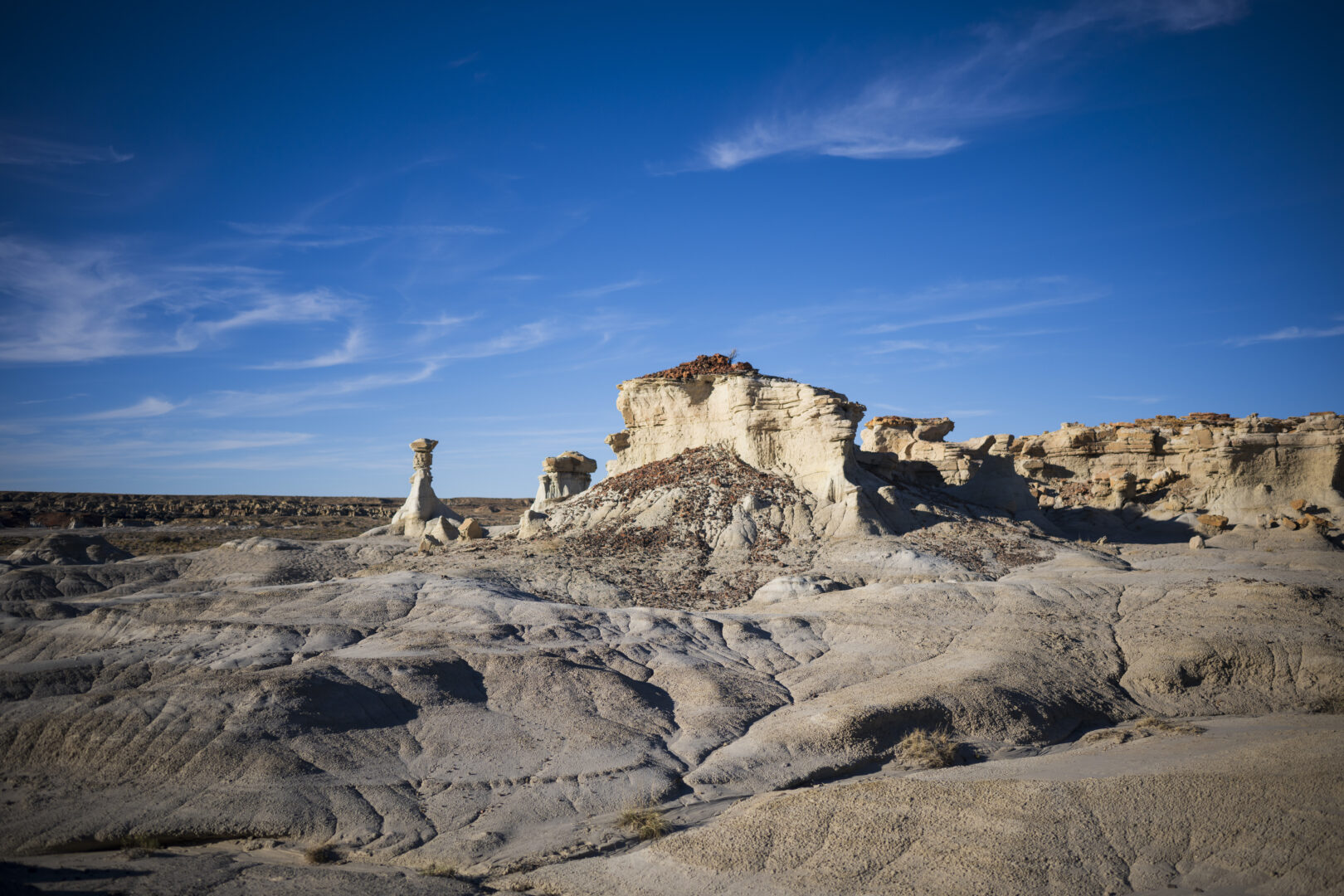
BASK IN THE ALIEN THRONE
Cresting the rise unveils a tableau that truly makes the mind bend in surreal fashion. Sensory overload, indeed. Here among the weathered labyrinth of passages and wind-eroded grottoes, there is one object that stands above all others, earning its distinctive moniker of the Alien Throne.
Appearing almost as if ripped from an Escher image, the throne draws swarms of visitors, especially as the sun fades against the tangerine skyline. It takes very little imagination to picture some strange being holding court for the masses gathered in silent repose. It would seem to be a fitting culmination of an extraordinary traverse through otherworldly land, but this area is one of the darkest spots in the state and as the Milky Way blazes across the dark sky filled with an abundance of glowing stars, Winters pauses the return trek back at the Guardians for a session of nighttime photos.
“We visit all the wilderness areas within this quadrant of New Mexico,” Winters says of other areas Navajo Tours USA visits. “We hold commercial permits with the Bureau of Land Management. And the National Park Services at Chaco Canyon and Aztec Ruins National Monument. Our mission is to continue weaving natural narratives through hiking and storytelling.”
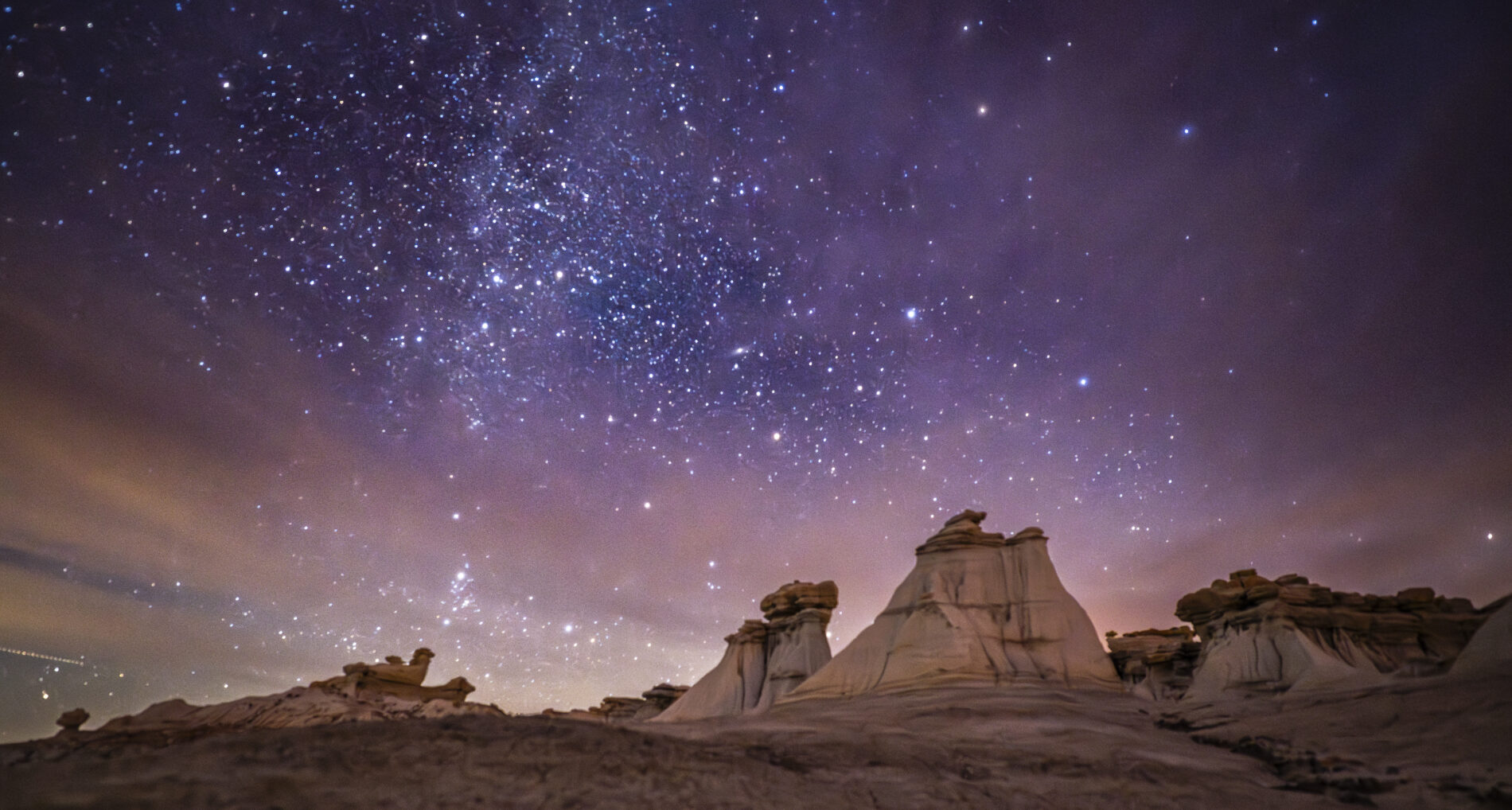
Photos by Roberto E. Rosales Photography Editorial by Glen Rosales
Navajo Tours USA – Nageezi, NM